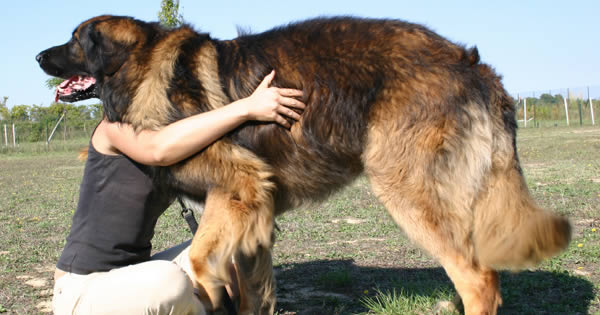Wobbler Syndrome is a nickname for a disease called cervical spondylomyelopathy ( CSM ). The disease of the cervical spine is that is seen in larger dogs. The spinal cord is compressed and the nerves along the spinal column, including those in the neck, do not function properly. The name wobbler comes from the characteristic wobbly walk that dogs dealing with the disease develop.

Basset Hounds, Doberman Pinschers, Great Danes, Rottweilers, and Irish Wolfhounds are the breeds most typically afflicted with this disease.
Symptoms of Wobblers Syndrome in Dogs
The symptoms of CSM are neurologic in nature due to the compression of nerves. They include a wobbly gait, weakness, neck pain or stiffness, particular weakness in the front limbs, partial or complete paralysis, scuffed toenails due to uneven walking, and difficulty in rising. Symptoms of CSM may be observed singly or in any combination. If you have a dog breed prone to the syndrome and it is experiencing any of these symptoms, it is important that it be seen by a veterinarian.
Causes of Wobblers Disease in Dogs
The causes of CSM are not widely known. It is suspected that giant breeds that grow too quickly are more prone to the syndrome. It is also thought that nutrition may play a role in some cases. Excessive calcium, protein or calories have been discussed as a cause of the syndrome in Great Danes.
Diagnosis of Wobblers Syndrome in Dogs
There is no test for CSM. Your veterinarian will attempt to rule out other diseases before diagnosing your pet with the syndrome. You can expect your veterinarian to take blood and urine samples to rule out other diseases. Your veterinarian may also x-ray your dog, or he may suggest that your dog has a magnetic resonance image (MRI) taken.
Treatment of Wobblers Disease in Dogs
The type of treatment prescribed for your dog will depend on the exact location of the spinal compression. Some owners elect to have their dogs surgically repaired, and some owners elect to treat their dog on an outpatient basis.
Dogs dealing with the syndrome should be given soft bedding, may need bladder catheterization, and should have their physical activity restricted. Nutritional changes may be called for depending on the dog’s current diet. Paralyzed dogs must be moved every four to five hours to prevent bed sores.
CSM is a syndrome that can appear and recede in alternating cycles. Unfortunately, the syndrome is not curable outside of surgical intervention. If you believe that your dog is suffering with CSM, it is important that you consult with your veterinarian as soon as possible.